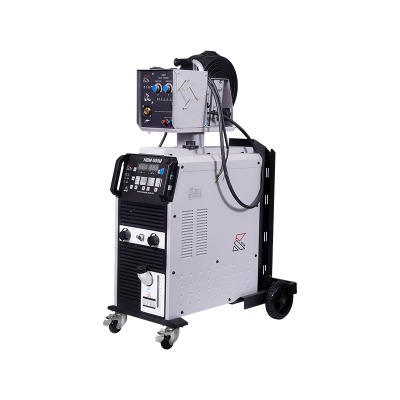Email: [email protected]
 2025.08.22
2025.08.22
 Industry News
Industry News

In recent years, Asia-based welding machine factories have gained increasing attention in the global market for their expanding export capabilities. With competitive pricing, scalable production, and a wide range of models tailored for diverse applications, these factories have become reliable sources for welding equipment across various industries. As the demand for welding machines continues to grow in sectors such as construction, automotive, shipbuilding, and infrastructure, the role of the Asia-based welding machine factory in international trade has become more pronounced.
One of the primary drivers behind this growth is the steady investment many factories in Asia have made in upgrading manufacturing processes. Automation, standardized testing, and improved material sourcing have helped enhance product consistency and reliability. As buyers worldwide look for dependable yet cost-effective equipment, these improvements have enabled welding machine factories in Asia to respond to bulk orders with shorter times and customizable options.
Geographic clusters in countries such as China, India, and Vietnam have become well-known for their industrial hubs, where many welding machine factories are located. These clusters allow for shared access to raw materials, components, skilled labor, and logistics infrastructure. Such environments foster a competitive manufacturing ecosystem, which encourages innovation and efficiency. Welding machine factories within these areas often collaborate with regional suppliers to streamline their operations and manage costs effectively.
Moreover, the ability to produce a variety of welding machines—including MIG, TIG, ARC, and multi-process units—has allowed Asia-based factories to cater to different market needs. Whether for light domestic repairs or heavy industrial use, there is usually a suitable option available. Some factories offer branding services, allowing distributors and retailers to launch their own labeled products. This level of flexibility has made the Asia-based welding machine factory a preferred partner for many global importers and resellers.
In terms of compliance and standards, many welding machine factories have taken steps to align their products with the safety and certification requirements of key export markets. Meeting regulations such as CE, RoHS, and ISO helps open doors to markets in Europe, North America, and other regions. Buyers often view such certifications as indicators of reliability and commitment to quality control. It also signals that the factories are capable of sustaining long-term export relationships and adjusting to evolving regulatory environments.
Another important factor contributing to the export strength of these factories is digitalization. Many welding machine factories now operate with a strong online presence, allowing them to attract international inquiries through e-commerce platforms, trade websites, and virtual exhibitions. This visibility has helped smaller or lesser-known factories gain traction and secure partnerships beyond their local markets. As international buyers grow more comfortable with remote procurement and online communication, the role of digital marketing and virtual sales channels continues to expand.
Shipping and logistics management also play a role in the competitiveness of Asia-based welding machine factories. Many of them have established connections with freight forwarders and understand how to handle bulk exports efficiently. Whether it involves full container loads or consolidated shipments, factories are often equipped to support global buyers with documentation, packaging standards, and timely dispatch.
The increasing export capacity of the Asia-based welding machine factory is not only a result of internal improvements but also a reflection of shifting global demand. As more regions invest in infrastructure and manufacturing, the need for welding equipment grows accordingly. With competitive pricing, scalable production, and responsiveness to international standards, these factories are expected to remain an important force in the global welding equipment supply chain. For businesses involved in the trade and distribution of industrial tools, partnering with a welding machine factory in Asia can provide consistent supply, product variety, and support for long-term growth.